da Vinci Surgical Robot System
The da Vinci Surgical System is a computer integrated surgical robotic system designed to facilitate complex surgical procedures in a minimally invasive manner. The system is controlled by a surgeon who works through fiber optic cables at a computer console. It is commonly used for many urologic surgeries, and increasingly for cardiac and gynecologic surgery. The FDA approved the da Vinci Surgical System in 2000 for adult and pediatric use.
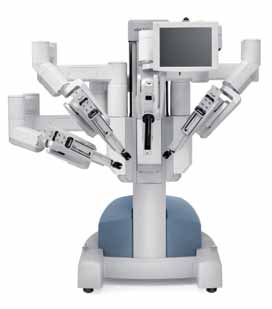
da Vinci S Robot Tower
System Design
Although the general term "robotic surgery" is often used to refer to the technology, this term can give the impression that the the da Vinci robot is performing the surgery. In contrast, it cannot—in any manner—run on its own. This is due to the fact it was not designed as an autonomous system and lacks any substantive decision making software, instead it relies on a human surgeon operator for all input, direction, and decision making.
The da Vinci System consists of four interactive robotic arms on a robot tower which are controlled from the surgeon's console. The three working arms accept a wide variety of modified surgical instruments that can perform all the needed manipulations to perform surgery.
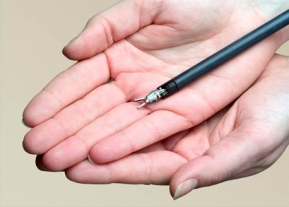
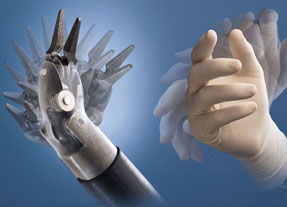
da Vinci robotic instruments simulate and enhance the normal human wrist dexterity.
A dedicated arm holds and also controls a stereoscopic laparoscopic camera that produces a three dimensional high-definition view of the operative field. While viewing through this advanced laparoscope, the surgeon can control all the working and visual robotic arms from the console. The da Vinci System scales, filters and translates the surgeon's hand movements into more precise micro-movements of the instruments, which operate through small incisions in the body.
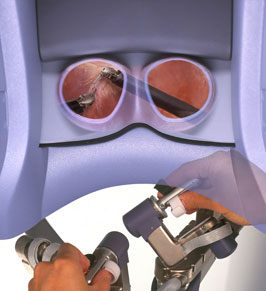
Surgeon view through the da Vinci optical system
The da Vinci System has been designed to improve upon two dimensional laparoscopy in which surgeons operate using hand-held, long-shafted instruments, with no control of the visual display or articulation ability. The da Vinci system provides surgeons with superior visualization, enhanced dexterity, greater precision, and ergonomic comfort, allowing surgeons the capability to perform procedures involving complex dissection or reconstruction in a minimally invasive approach. Also, while maintaining an effective pressurized operative field, the system offers the usual potential benefits of a minimally invasive procedure, including less pain, less blood loss and less need for blood transfusions, a shorter hospital stay, a quicker recovery and faster return to normal daily activities.
The da Vinci S (four arm) System costs over $1.5 million per unit, in addition to annual maintenance fees in the hundreds of thousands. Moreover, robotic surgeons, and their surgical teams, must undergo rigorous training to master the capabilities of the system. In order to be able offer this technology to their patients, Dr. Trapasso and Dr. Maggioncalda have created a highly trained, dedicated team of surgeons, anesthesia personnel, and operating room staff at Lehigh Valley Hospital.
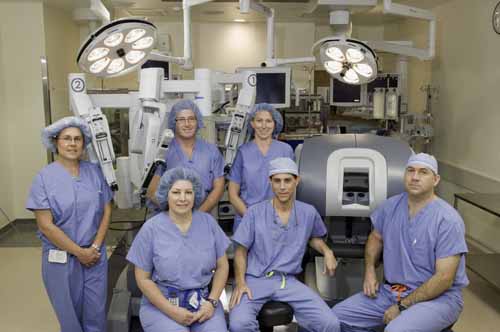
Robotic surgeons Dr. Joseph Trapasso and Dr. John Maggioncalda (seated center, right)
with the Lehigh Valley Hospital Robotic Surgery Team.
Urologic Clinical Uses
The da Vinci Robotic System has been successfully and routinely utilized in the following surgeries by Drs. Trapasso and Maggioncalda:
